In Transylvania County | 1912-1961
1912
-
Louis Carr started Carr Lumber Company in Pisgah Forest. He built one of the largest band saw mills in the state
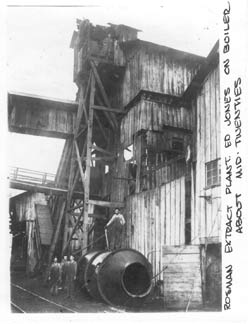
-
Silversteen established the Rosman Tanning and Extract Company.
Constructed a number of Mill houses of various designs and sizes
-
United Daughters of the Confederacy established a 600 sq
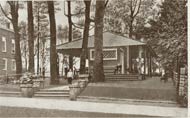
foot cottage on the courthouse lawn. This - and the 3,000 donated books - was the start of the Transylvania County Library
-
The Greater Western North Carolina Association published its first information guide to “The Land of Sky” in which Transylvania County was listed as “The Land of Waterfalls”

1913
-
Camp French Broad for Boys established as the first summer camp
- Biltmore Forest School closed
1914
-
Camp Sapphire for Boys established by Bill Fetzer and his
 brother Robert Fetzer
brother Robert Fetzer
- Edith Vanderbilt sells 70,000 acres to the federal government for $433,500
-
Pisgah National Forest established, proclamation signed by
President Woodrow Wilson
-
Moltz Lumber Company started operations
-
The Great Flood of 1916. Heavy rains from multiple tropical storm systems plagued the area and caused massive flooding. Damage from the landslides and flooding extended over much of the south-central mountain area. The July 15-16 flood is considered the flood of record in western North Carolina. These same heavy rains caused catastophic failure of the Lake Toxaway Dam on August 13. This triggered a debris flow along the Toxaway River that traveled over seven miles into South Carolina. “Approximately 5,376,548,571 gallons of water changed hands.” As a result, the Lake Toxaway Inn went out of business.
- Rosman High School was organized. After students had been attending classes in homes and churches, Rosman High School was organized in 1916. The wooden building, constructed on land donated by Joseph Silversteen, had five rooms and was used for both high and elementary school. Ten students were required to have it designated a high school, and so a number of teachers took courses to meet this numerical requirement. In 1919 J. E. Ockerman became school principal and numbers increased. The school held grade one through grade eleven. In 1923 the school received accreditation by the state as busses started bringing larger numbers of students to the school. The old High School was completed in 1927. The old portion of the Elementary School was constructed in 1922, the new buildings were added in 1949 and this structure is now used as Junior High School.
-
The Sylvan Valley News changed its name to Brevard News
- Camp Keystone for Girls established as the first camp for girls
1917
-
The construction of the Silversteen residence, Silvermont, was completed. The na
 me, once again, was an amalgamation of his last name Silversteen and his wife’ s family name, Elizabeth Jean Mount.
me, once again, was an amalgamation of his last name Silversteen and his wife’ s family name, Elizabeth Jean Mount.
1919
- The first high school was located in Brevard. Due to rapid increases in enrollment, a new one opened in 1925
1920
-
Rosenwald School formally opened its doors for
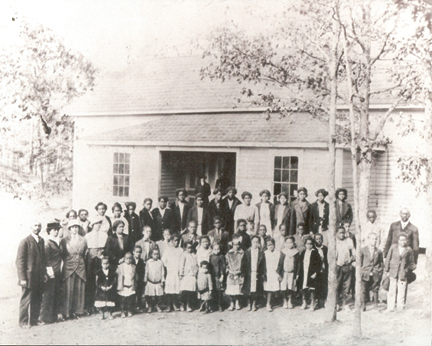
African-American students
- Jail added to the rear of the Courthouse
1921
- February 23, Citizen’s Telephone Company incorporated
-
Transylvania County claims only 45 miles of highway, none of it
paved. A few years later US Highway 64 between Brevard and
Rosman was paved
- Riverside Sanitorium operated by Dr. R.L Stokes (in the Ramsey home on Greenville Hwy). Later moved to Country Club Road, renamed Brevard Hospital (now the Brian Center)
1923
- Transylvania County had its first accredited high school
-
Neoclassical Revival-style bank built be R. P. Kilpatrick
(Brevard Banking Company)
1925
-
Austin’s Photography Studio opened in downtown Brevard by William C. Austin
-
Under Superintendent T.C. Henderson, Transylvania County became the first school system west of Raleigh to establish a nine-month term of school
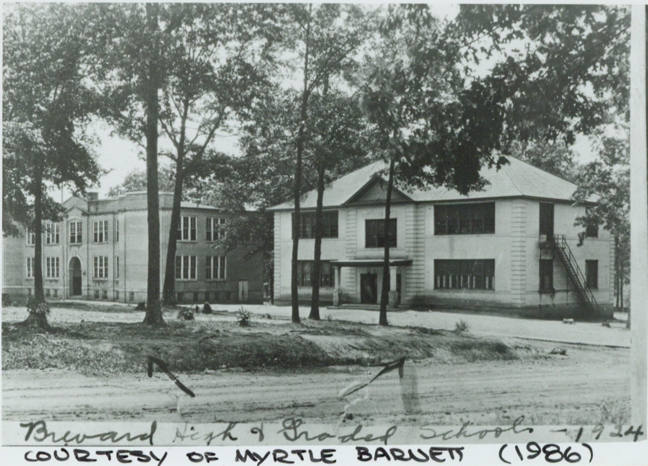
- Brevard High School was constructed on South Broad Street
1926
-
Brevard City Hall and Fire Station built by R. P. Kilpatrick. First
 municipal buildings dedicated to that purpose
municipal buildings dedicated to that purpose
1927
1928
- Brevard Hospital sold to Drs. Summey and Lynch and renamed Transylvania Hospital
1930
- Transylvania Hospital closed for two years because of the “Great Depression”
1931
-
The Brevard News changed its name to The Transylvania Times
- Davidson River Church and Brevard Presbyterian Church united to form the Brevard-Davidson River Presbyterian Church. In about 1800 there were Presbyterians who regularly met near the current Pisgah Forest. The first permanent structure was built in 1826 in a grove donated by Benjamin Davidson for a “free meeting house”. Two years later the 28 members reorganized as the Davidson River Church. In 1855 a second building containing classrooms was constructed, but the structure was destroyed by fire in 1891. The civil war had brought a schism between the northern and southern groups but they united in 1896 The Davidson River church, known as the “Mother Church”, was also used by Baptists and Methodists. Leaders established five chapels, including one in 1887 on Probart Street. In 1891 this was organized as the Brevard Presbyterian Church with 29 members. Perhaps due to the low membership of both, members voted to merge in 1931 forming the Brevard-Davidson River Church. As membership increased there was a need for more space. So the Probart Street church was sold in 1949-50 and the Franklin Hotel on East Main Street was purchased. For a number of years worship services were held in the hotel. The cornerstone for the new sanctuary was laid in March 1956.
1933
-
Brevard Institute closed
-
Transylvania Hospital purchased by Drs. Newland and Cunningham and relocated to Norwood House on Probart Street. It became the Lyday Memorial Hospital, incorporated as a non-profit public institution with local trustees
-
The Civilian Conservation Corps, 1933-1942. This government recovery program had two goals: to provide work for unemployed young men and to rehabilitate the nation’s ravaged land and forests. With Pisgah National Forest and Nantahala National Forest occupying approximately one-third of the county, Transylvania County was a prime location for the work of the CCC. Camp John Rock, located northwest of Brevard near the Pisgah Fish Hatchery and Camp Balsam Grove, which stood west of Brevard near the Balsam Grove community, trained young men from throughout North Carolina. The work of the CCC in this county was closely tied to the U.S. Forest Service and included trail construction, road building and maintenance, recreational site development, fish and wildlife
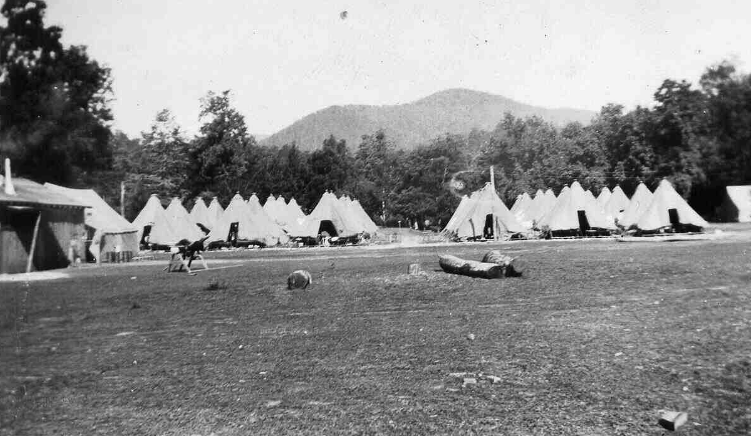 improvement, fire hazard reduction, site restoration, landscape improvement and building construction. Young men also served as caretakers and hosts to the many visitors to the Pisgah National Forest’s camp and picnic grounds. CCC camps were operated by the U.S. Army with a beginning salary of around $30 per month. It was an all encompassing program and offered classes in basic education, telephone line construction, landscaping, truck driving and machine operation. Through cooperation with Brevard College, men could take classes in shorthand, typing and bookkeeping. There were also vocational guidance, job placement, athletics, music, hiking and moving pictures two nights a week. In addition to having a lasting effect on Pisgah National Forest, the CCC program also expected its young men to return home socially, culturally and economically rehabilitated and with greatly improved health and labor skills.
improvement, fire hazard reduction, site restoration, landscape improvement and building construction. Young men also served as caretakers and hosts to the many visitors to the Pisgah National Forest’s camp and picnic grounds. CCC camps were operated by the U.S. Army with a beginning salary of around $30 per month. It was an all encompassing program and offered classes in basic education, telephone line construction, landscaping, truck driving and machine operation. Through cooperation with Brevard College, men could take classes in shorthand, typing and bookkeeping. There were also vocational guidance, job placement, athletics, music, hiking and moving pictures two nights a week. In addition to having a lasting effect on Pisgah National Forest, the CCC program also expected its young men to return home socially, culturally and economically rehabilitated and with greatly improved health and labor skills.
1934
- Rutherford and Weaver Colleges merged to create Brevard College. The Brevard Institute donated land on the edge of town for a college to provide education for young men and young women in western North Carolina. To concentrate resources and talent the United Methodist Church decided to centralize two older small colleges on the Brevard site. The oldest was the Owl Hollow School which started in 1853 in Burke County. At its inception the Reverent Laban Abernethy, a Methodist minister, established the principle that “None shall ever be turned away for want of means”. In time the school developed intoRutherford College which in 1900 was acquired by the Western North Carolina Conference of the Methodist Episcopal Church, South. In 1854 in the village of Weaver eight miles north of Asheville, a boarding house school was established. The building was destroyed by fire in 1872 . The following year Weaverville College was incorporated. In 1883 it was deeded to the Methodist Episcopal Church, South. In 1912 it became a junior college and changed its name to College. 1In 1933 the Western North Carolina Conference ordered the merger Rutherford College and Weaver College on the land provided by the Brevard Institute. A Board of Trustees was created and Dr. Eugene Coltrane was appointed the first president. On September 17, 1934, College opened its doors to 385 students.
1935
-
Lyday Memorial Hospital, due to population growth, moved back to its former Country Club location
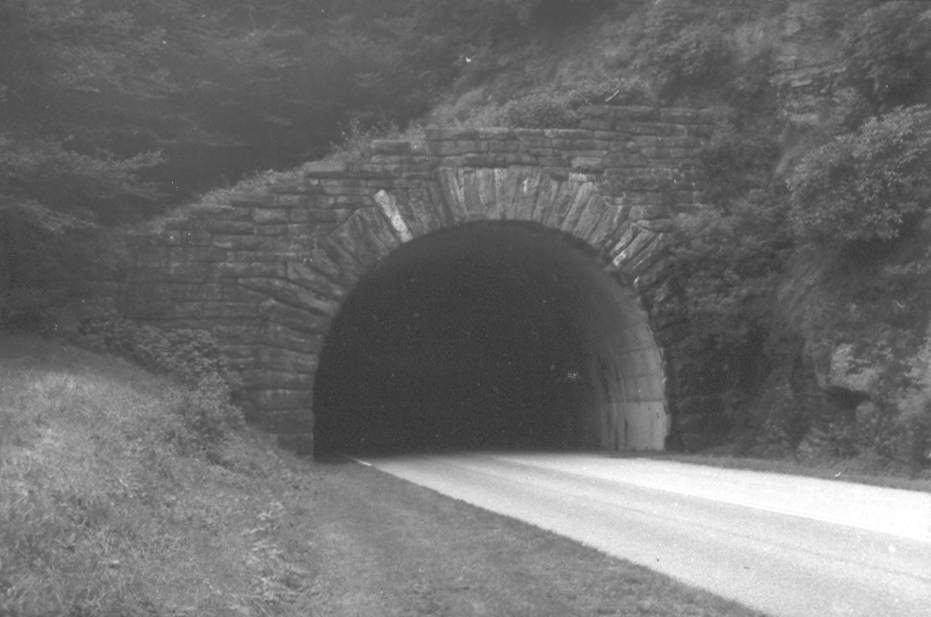
- Construction started on Blue Ridge Parkway (completed 52 years later)
1936
-
The Music Center founded by James C. Pfohl as a summer camp for boys at Davidson College; moved to Queens College in 1942 and became co-ed
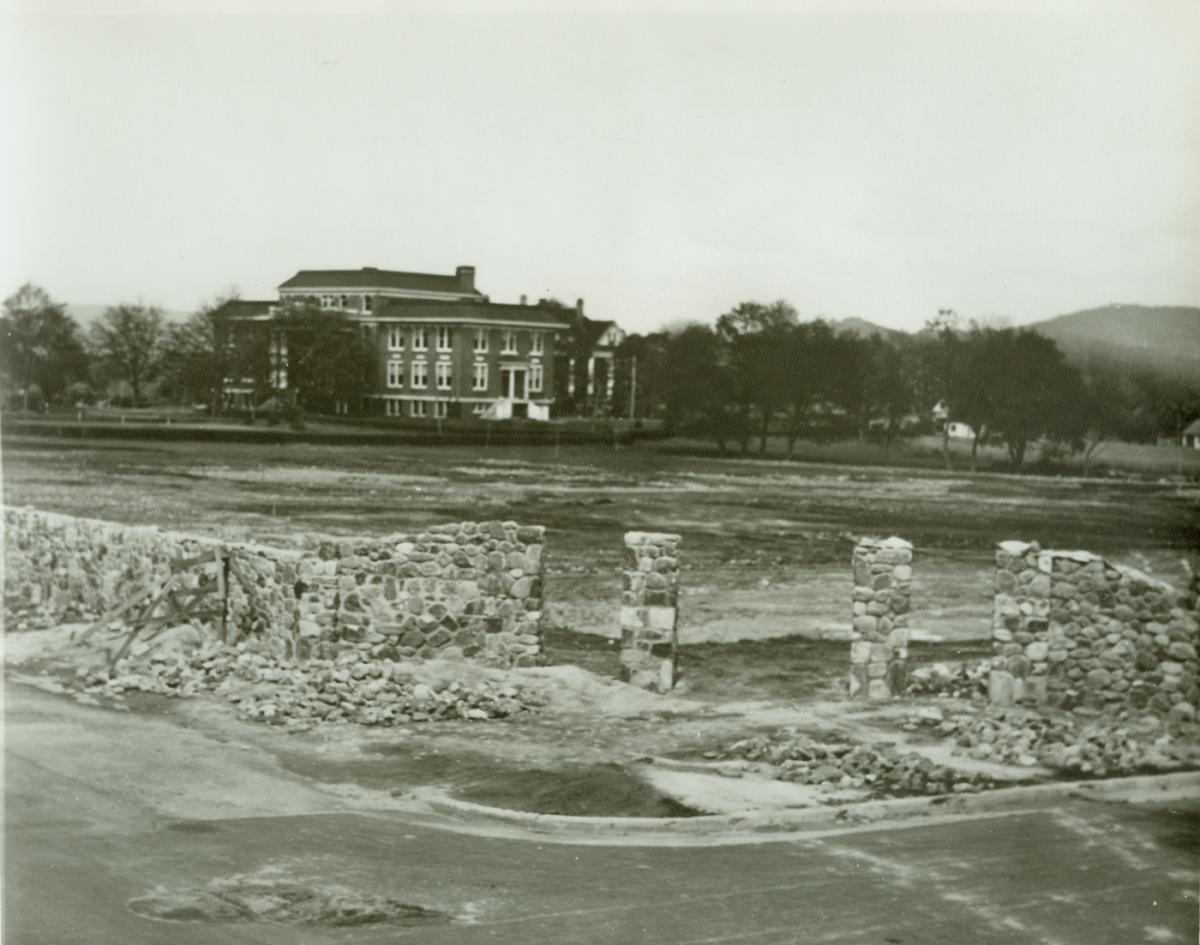
- Construction of Brevard College stone fence and gate began; undertaken as a WPA project
1938
-
March 28: Ecusta Paper Corporation qualified to do
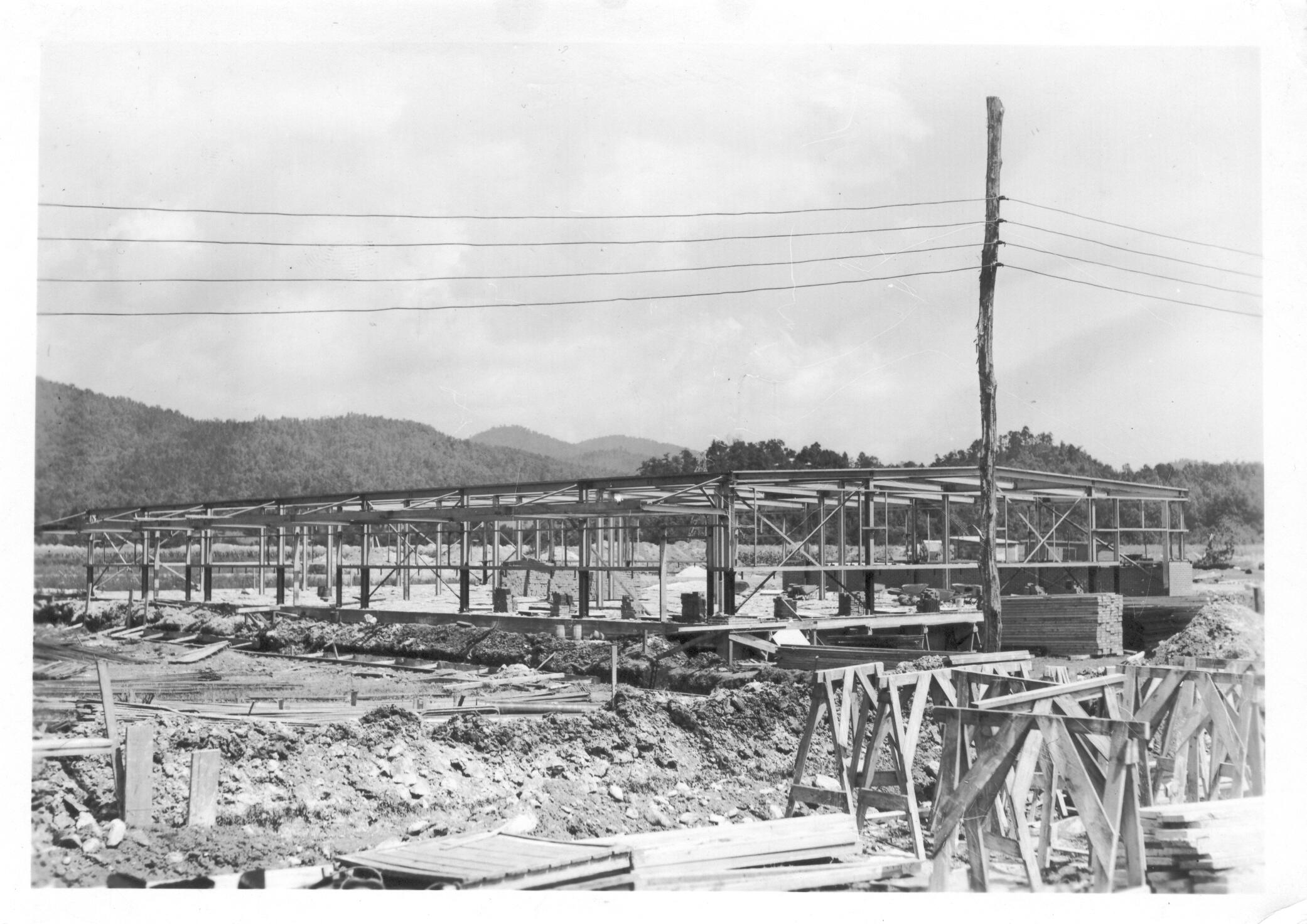 business in North Carolina
business in North Carolina
-
Davidson River diverted during the construction of the Ecusta plant
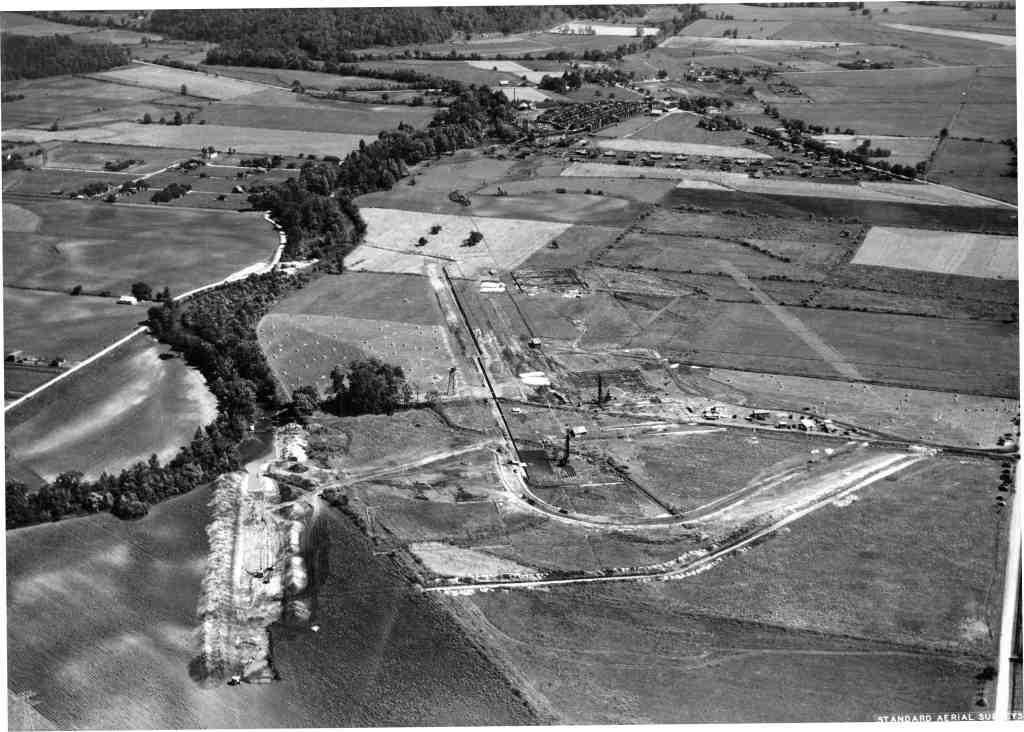
1939
-
August 6: The first cigarette paper was produced by Ecusta Paper Corporation in Pisgah Forest
- Lyday Memorial Hospital’s name changed to Transylvania Community Hospital
1941
- March 12: The four-room Rosenwald School mysteriously destroyed by fire
1943
-
Search began for a perfect setting for “well-balanced program of outdoor
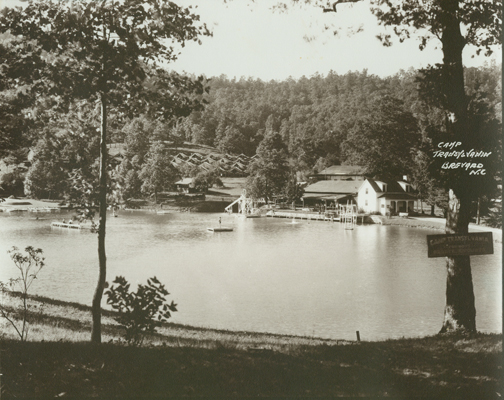 recreation and instruction of music and art”. Place located at site of former Camp Transylvania for Boys.
recreation and instruction of music and art”. Place located at site of former Camp Transylvania for Boys.
1944
- Brevard Music Camp opened.
1946
-
Brevard Catholic Society organized
- Brevard Music Festival introduced following camp session, August 9-11.
1947
- Toxaway Inn torn down
1949
-
White squirrels came to Brevard
- Olin Industries of East Alton, Illinois purchased Ecusta Paper Corporation
1950
- Beulah Mae Zachary, founder of Brevard Little Theater, killed in airplane crash
-
Harry H. Straus, founder of Ecusta, died
-
Camp Sapphire for Boys had been bought for use by
Ecusta workers; renamed “Camp Harry H. Straus”
-
Citizens Telephone Company established dial service. A new phone company building was constructed on Probart Street
- W. P. Mull was taking care of the white squirrels for his granddaughter when their escape and release occurred.
1954
- Ecusta Paper Corporation now owned by Olin-Mathieson
1955
- Brevard Music Camp name changed to Brevard Music Center
1956
-
December: Library moved into a brick building on Courthouse grounds
- Brevard Music Center introduced as co-educational summer festival
1958
-
July 11: Opening ceremonies for construction plant by E. I. du Pont de Nemours Co. 1During the 1958-1962, at a small plant in Brevard, DuPont made hyperpure silicon for electronic devices. This plant was closed when the silicon process was discontinued due to market changes. Almost immediately these silicon workers were trained in film making and moved to the larger DuPont plant in the 12,000-acre Buck Forest. Pure water and air were required for making sensitive X-ray film. Most of the employees worked expertly in almost total darkness, making the highly sensitive film. This plant was the first in the country to make medical X-ray films on “Cronar” polyester film. In 1996, DuPont sold its Diagnostic Imaging business unit to a Houston-based investment firm, the Sterling Group.
- Joseph S. Silversteen died on October 18
1959
- The first football team at Rosman High School was organized under coach W. J. Cathey Jr.
1960
-
Pisgah Cotton Mill closes
- Schenck Job Corps Civilian Conservation Center established in Pisgah Forest
By Brian du Toit and Susan Threlkel - Transylvania Sesquicentennial Steering Committee




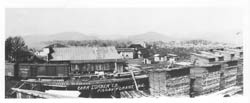



_0.jpg)
_0.jpg)



